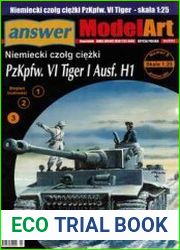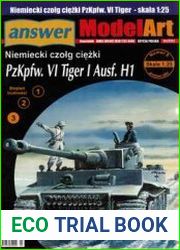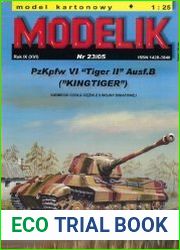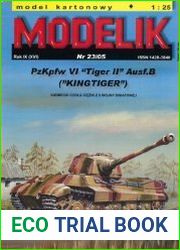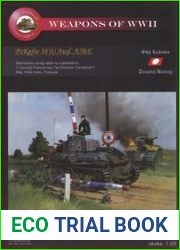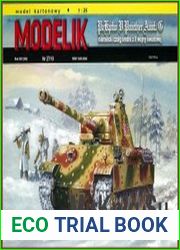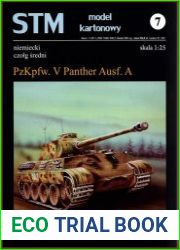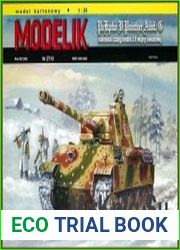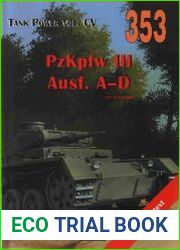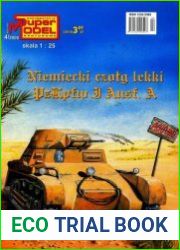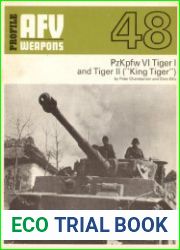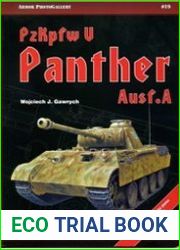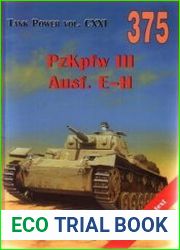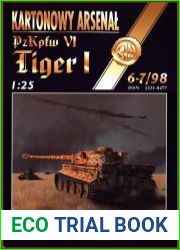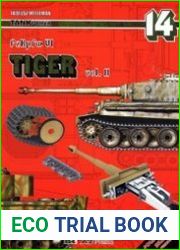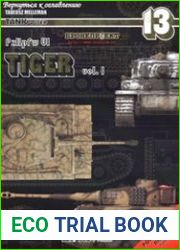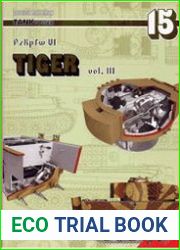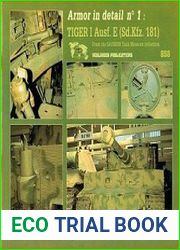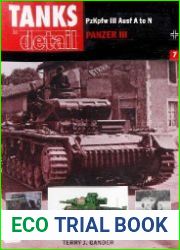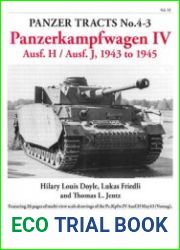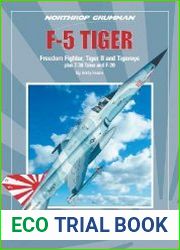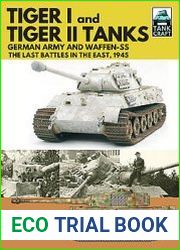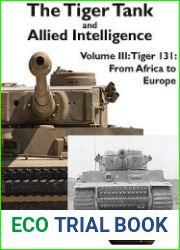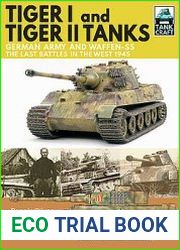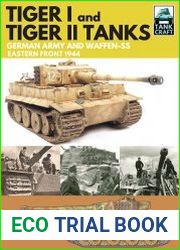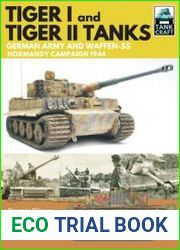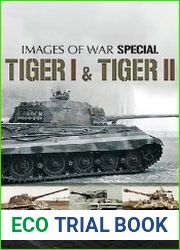
MAGAZINES - PzKpfw. VI Tiger I Ausf. H1

PzKpfw. VI Tiger I Ausf. H1
Format: JPG | 220X320 / А4
File size: 120 Мб
Language: PL

File size: 120 Мб
Language: PL

The book describes the history of its creation, development, and use by the German army during the war. The Plot of PzKpfw VI Tiger I Ausf H1 The PzKpfw VI Tiger I Ausf H1 is a German heavy tank that played a significant role in World War II. Its development, production, and deployment were critical moments in the war, and its impact on the outcome of the conflict was substantial. This book delves into the history of this iconic tank, exploring its creation, evolution, and use by the German army during the war. The story begins in the early 1940s when the German military began searching for a replacement for their existing tanks. They wanted a vehicle that could withstand the intense battles they were facing on the Eastern Front. The designers at Porsche and Henschel & Son, two prominent German automobile manufacturers, responded to this need by developing the Tiger I, a behemoth of a tank that weighed over 57 tons and boasted an impressive 88mm gun. The tank's thick armor and powerful weaponry made it nearly invulnerable to enemy fire, and it quickly became a formidable force on the battlefield. As the war raged on, the Germans continued to refine the Tiger I, introducing new variants like the Ausf E and F. These updates improved upon the original design, addressing issues such as mobility and visibility. However, these improvements came at a cost - the tanks became heavier and more difficult to maneuver, making them less agile than their predecessors.
В книге описана история его создания, развития и использования немецкой армией во время войны. PzKpfw VI Tiger I Ausf H1 PzKpfw VI Tiger I Ausf H1 - немецкий тяжёлый танк, сыгравший значительную роль в Второй мировой войне. Его разработка, производство и развёртывание были критическими моментами в войне, и его влияние на исход конфликта было существенным. Эта книга углубляется в историю этого культового танка, исследуя его создание, эволюцию и использование немецкой армией во время войны. История начинается в начале 1940-х годов, когда немецкие военные начали поиск замены своим существующим танкам. Им нужна была машина, способная выдержать напряженные бои, с которыми они столкнулись на Восточном фронте. Конструкторы Porsche и Henschel & Son, двух известных немецких автопроизводителей, откликнулись на эту потребность, разработав Tiger I, бегемота танка, который весил более 57 тонн и мог похвастаться внушительным 88-миллиметровым орудием. Толстая броня и мощное вооружение танка сделали его почти неуязвимым для огня противника, и он быстро стал грозной силой на поле боя. По мере того, как бушевала война, немцы продолжали совершенствовать «Тигр I», представляя новые варианты, такие как Ausf E и F. Эти обновления улучшили первоначальный дизайн, решая такие проблемы, как мобильность и видимость. Однако эти усовершенствования обошлись дорого - танки стали тяжелее и сложнее в маневрировании, что сделало их менее маневренными, чем их предшественники.
Il libro descrive la storia della sua creazione, sviluppo e uso da parte dell'esercito tedesco durante la guerra. VI Tiger I Ausf H1-VI Tiger I Ausf H1 è un carro armato pesante tedesco che ha svolto un ruolo importante nella seconda guerra mondiale. Il suo sviluppo, la sua produzione e il suo dispiegamento sono stati momenti critici della guerra e la sua influenza sull'esito del conflitto è stata significativa. Questo libro si approfondisce nella storia di questo carro armato di culto, esplorandone la creazione, l'evoluzione e l'uso dell'esercito tedesco durante la guerra. La storia inizia all'inizio degli annì 40, quando i militari tedeschi cominciarono a cercare un sostituto per i carri armati esistenti. Avevano bisogno di un'auto in grado di resistere agli intensi combattimenti che hanno affrontato sul fronte est. I costruttori Porsche e Henschel & Son, due famosi costruttori di automobili tedeschi, hanno risposto a questa necessità sviluppando il Tiger I, un ippopotamo che pesava più di 57 tonnellate e poteva vantare un notevole strumento da 88 millimetri. La grassa armatura e il potente armamento di un carro armato lo hanno reso quasi invincibile per il fuoco nemico, ed è diventato rapidamente una forza temibile sul campo di battaglia. Mentre la guerra scoppiava, i tedeschi continuavano a migliorare Tiger I, presentando nuove opzioni come Ausf E e F. Questi aggiornamenti hanno migliorato il design originale, affrontando problemi come mobilità e visibilità. Ma questi miglioramenti sono costati caro - i carri armati sono diventati più pesanti e difficili da manovrare, rendendoli meno manovrabili dei loro predecessori.
''







